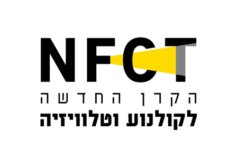See Under:Actor
Curator: Noam Segal
17/10/2013 -
04/01/2014

“Hypokrites”, actor in ancient Greek, means the one who interprets; that is, the interpreter and the mediator rather than necessarily the one who enacts and performs. Nevertheless, the actor as enactor and performer always tries to access the inner depth of a certain character, to interpret and mediate it for the audience. In contemporary parlance, an actor is someone who participates in a game that has certain rules, and is always an agent of something or someone. Whether he is an independent actor or is playing a role, or is serving as the agent of some external entity, he represents a certain interest or a system of interests.
Some say that we live today in the performance society; our virtual performance in social media, our self-identification with our external appearance, and the great emphasis on the realm of appearances. At the same time, a waitress at a restaurant is also playing a role, the teacher in class, and even parents fulfill the roles of dad and mom. We all perform and actualize a certain agency in relation to the game in which we are placed. But when we perform, participate or enact, when we act, who plays a role in us? How many agents are present on the scene? How much logic, God’s will, how many desires, rational reasons, invisible hands, statistical data and unconscious longings operate in us simultaneously?
Objects, animals, potted plants and things also function as actors, as conveyors of meaning and triggers of processes, acting and being activated in line with certain rules of the game. Spaces as well carry an interest and a certain value system, as do worldviews and moral attitudes. Each object plays a role, each thing is an actor on behalf of a certain agency at a given moment.
The exhibition See Under: Actor presents a conceptual spectrum of the value “actor” and examines its derivations. It fans out the concept “actor” across several axes of reference, including objects and modes of display; modes of acting including mimicry; and modes of performance that deal with participation and becoming.
These axes intertwine with each other like ropes, which the viewer can hold on to and through them think about the concept “actor”.
In this installation Boaz Arad has combined two of his previous video works with a selection of primitivist masks from colonialism-hit regions.
The video works, installed opposite each other, show the artist, a mature chicken standing on his head, feeding a new-born chick. This biological cyclicality is accompanied by masks imported or taken from various tribes. For the tribesmen, each mask represents a certain trait such as balance and order, fertility, mental maturity etc., which a certain ritual may bestow on a person.
Anthropologists agree that without symbols, totems and a visual agency to follow, the existence of any group in the world would be flimsy to the point of non-existent. Social sentiments stem from a unifying agency, from a representative actor. Whether these sentiments revolt against this agency or support it, they affirm it and thus enable the group’s continuing existence. In fact, the existence of such a symbolic agency is integral to any group, and the latter, for its part, is unrepresentable without a unifying name and a sign that embodies it (flag, book, totem).
The unifying agency does its work based on the ability to mimic and on developing means of resemblance and difference. As a group, our conception of identity and selfhood derives from our ability to resemble each other and be differentiated from those around us.
In this work, Arad presents himself as a totem, creating relations of identity and continuity between the chicken and the chick, the primitivist rituals, and processes that belong to the animal world and to rituals from the social field.
Emily Wardill’s feature-length film tells the story of Imelda, a forty-something heiress, whose fortune comes from her father’s arms business. In the film, she uses her inheritance to build a house for the ghosts of the victims of the arms her father had manufactured. During the building of the house and the psychoanalytic treatment the protagonist undergoes, the building site starts to be squatted by people Imelda believes are the ghosts she has been expecting.
The work’s “actors” move in a scope spanning from objects, spaces, dead and living people to desires and the unconscious: the large house, the ambitious architect, the psychologist, the ghosts, the squatters, and the range of possible scenarios that the protagonist experiences as realistic possibilities.
The film is based on the life of Sarah Winchester and the mystery house she built in San Jose, California. This enormous house is known to this day for its architectural curiosities, including doors that open onto walls, stairs that lead nowhere and so on.
The work was developed in a series of workshops in collaboration with the Migrants Resource Centre as part of the Edgware Road Project at London’s Serpentine Gallery. In the workshops, Wardill used the tools of melodrama and improvisation to examine subjects such as public housing, work, coexistence between migrants and more established residents, and the ability of theatrical practice to trigger political processes. Wardill’s work investigates the way in which social meanings are projected onto various objects.
Courtesy of LUX, London; the artist; Altman Siegel Gallery,
San Francisco; Carlier Gebauer Gallery, Berlin; Jonathan Viner
Gallery, London; and STANDARD (OSLO)
Screening times:
Mon, Wed, Fri, Sat: 10 am, 11:20 am, 12:40 pm
Tue, Thu: 4 pm, 5:20 pm, 6:40 pm

Godard’s film, shot partly in the West Bank, is a cinematic essay on the link between politics and the screened image. What started as a documentary on Palestinian resistance groups eventually became an essay questioning the possibility of producing a reliable documentation of reality through a director’s framing.
The film moves between “here”, the home of a French middle class family who watches television, and what happens “elsewhere” – in the resistance groups in Palestine. In this film Godard edits together documentary and staged sequences, while subverting the “truth” status established on acting in front of the camera and editing the screened image. By using reflexive cinematic techniques, the film examines the link between “independent” political thought and the structure of the “real” media fiction. It is suspicious of the screened image, and especially of the image calling itself “documentary”, and examines the degree of its truthfulness and falsity and its being constructed and constructing a perception of reality which is subject to the director’s judgment.
The presented sequence shows a little girl in a refugee camp, reading a Mahmoud Darwish poem in front of the camera with extroverted and recognizable political gestures, familiar from the theater as well as from the politics of our own times.
This video work presents live editing of a performance event held by Liz Magic Laser in New York in 2011. The artist used sequences taken from interviews of American politicians on television networks and from their public speeches. In the work, these texts are presented by actors who displace them onto different situations, for instance romantic scenes, and enact them among an audience seated in a theater. The passages were filmed by a number of cameras and screened live on the theater stage, while the artist edited them.
The work draws its inspiration from “agitprop” theater practices from the period of Russian Constructivism, theater practices in which propaganda agents edited and staged the daily news as a live newspaper in order to mobilize the public to social action.
The work examines contemporary politics and its staging modes, which recall in their absurdity the genre of reality television. It highlights publically-elected figures’ instrumental use of the affected and sentimental conveying of emotions to capture the hearts of the masses. At the same time, it also examines the performance of political activists around the world, their ability to convey authentic emotions through the media, and the ways in which the political hegemony re-appropriates these performances again and again.
Commissioned by Performa
The Nest is an episode in the surrealist drama series Ourhouse created by the artist. In this short episode, Mellors’ regular actors are seen in four successive scenes playing some eccentric characters with no fixed identities. The first scene features a direct absurd discussion of Clint Eastwood’s film Every Which Way but Loose (1978) and of the “talking” ape that features in it. The next scene is dedicated to an animalistic Chase game, the third scene presents another absurd discussion and in the last scene a man becomes a flowerpot.
In these scenes, Mellors confronts conceptions of primitivism versus enlightenment, and mimicry and acting versus becoming. He does this through a sculptural use of language, performative speech acts and repetitions, and while turning the different spaces in which the characters operate into significant agents in the structuring of the filmed events.
A close look at the acting modes in this work reveals the movement between, on the one hand, becoming and aspiring to become something else, and, on the other, infantile and affected acting. Mellors’ sophisticated work discusses ancient practices of mimicry and examines conceptions of enlightenment that attribute supremacy to one life-form or another. His characters become the other, be it an animal or an object, and in the process criticize hegemonic Western conceptions of identity.
Commissioned by Fondazione Sandretto Re Rebaudengo.
Courtesy of the artist and Matt’s Gallery, London; MONITOR,
Rome; and Galerie Diana Stigter, Amsterdam
In the work Contagious, the artists documented a performance enacted in front of the camera by non-actors in a black neon-lit space, which could be contemporary or could be taken from the New Wave scene of the 1970s.
The performance features Vaginal Davis performing moves from the Cakewalk dance. Black slaves in the plantations of the American south developed this dance in the 19th century as a derisory imitation of the behavior of their white owners. This dance was “recopied” at the end of the 19th century by the American bourgeoisie, which saw it as an authentic Afro-American dance.
Alongside Vaginal the performance features Arantxa Martinez in an epileptic dance. This dance borrowed its name from the epilepsy diagnosed by medical studies examining the movements of the hysterical woman at the end of the 19th century. It is unclear whether the women observed by the doctors actually moved like this, or whether this was just how the dances that appeared at the time in the Parisian café scene imagined a dangerous loss of control by the feminine body as expected of a hysterical woman. In any event, at the time it was thought that one should beware of such dances, since it was believed that anyone watching them and imitating their movements and gestures might catch the disease of feminine loss of control.
The space in the video work looks like it was taken from a different time, whereas the audience looks like it is made up of contemporary hipsters, so that it is unclear to the work’s viewer who is acting and who is watching, who is becoming infected and who is infecting. The inability to distinguish between the various agents and the practice of mimicry in the context of contagion seek to create a moment of deviation from the existing normative order of identities.
Courtesy Marcelle Alix, Paris
and Ellen de Bruijne Projects, Amsterdam
Roiy Nitzan’s surprising work raises questions about who is the viewer and who is being viewed, who is the actor and who is the agent.
Upon entering the space, the viewer discovers a projection room, in which people are sitting and watching a movie. The monotone film accompanied by elevator music is soon revealed to be a ruse. The elevator cab rises and rises, peeking into residential apartments or hotel rooms, when suddenly the spectators, all men, turn around and point a deep inquisitive gaze at the viewer who is peering at them.
The watching masculine figures and the viewers take on the status of double agents in a work that uses a gimmick to create feelings of surprise, fear and uncertainty.
Sound design: Ronen Nagel
Music: Uzi Remirez
Supported by the New Israeli Fund for Cinema and Television
and the Ministry of Culture and Sport – The Israeli Film Council
The truth value of the participants’ statements in Ruth Patir’s video work is unclear. The work is filmed in the documentary genre but verges on the mockumentary. It presents the surreal story of a person, a car mechanic who takes care of people, cars, demons and other objects and communicates with them. The different recipients of his treatment are presented to the camera as essentially undistinguished from one another, and their stories and the treatment they receive unfold in an evenhanded manner. Each of them tells the camera, in his own words, about the treatment he has undergone and about the strange pagan ritual he had to perform in order to relieve himself of a certain burden. The different shades of the language function as the only essential agency shedding light on the participants’ identity. The work’s title, Shlomo X, refers to the first-order agency status of an undercover agent, of whose underground activity we are unaware. This status becomes blurred in the work, since it is unclear whether it is a person who plays the role of the double agent, or whether it is an agent who communicates with unknown dimensions.
Supported by the New Israeli Fund for Cinema and Television,
the Ministry of Culture and Sport- The Israeli Film Council
In this work, comprising four video segments, Sharon Hayes reads out the transcription of the text that appeared on the four tape reels that the millionaire heiress Patricia (Patty) Hearst sent her parents after being kidnapped by the terrorist organization The Symbionese Liberation Army in 1974.
In three of the recordings she sent, Hearst detailed the ransom demanded by her kidnappers. After her parents paid this ransom only partially, Patty informed them in the last recording that she had decided to join the revolutionary organization and change her name to Tania (inspired by the nom de guerre of Che Guevara’s guerrilla fighter comrade). Patty was later captured on a security camera while committing an armed robbery with the other group members. She was arrested and sentenced to seven years’ imprisonment, but was pardoned by President Carter after serving 20 months of her sentence. In the research Hearst is presented as a classic case of the Stockholm syndrome, but also as a duplicitous and opportunistic actress.
In the work, the artist reads out Hearst’s words anemically and apathetically, as if she has learned them by heart, but makes mistakes in certain places or skips one or more words. The audience, unseen but heard in the film, corrects and helps her. Hayes is filmed in a static shot against a white background, in a way that highlights the use of language, the particular expressions and the lack of theatricality of her reading of the text, in contrast with its original transmission by the kidnapped Hearst. Through the frequent “mistakes” and their placement, the artist highlights the text’s contents and the kidnapped woman’s way of expressing herself. She presents herself as an agent-actress, but mainly creates Hearst as such, as well as confirming the audience’s function as participant.
Courtesy of the artist and Tanya Leighton Gallery







